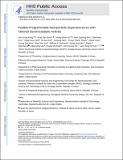| dc.contributor.author | Kang, Eun Sung | |
| dc.contributor.author | Kim, Yong-Tae | |
| dc.contributor.author | Ko, Young-Seon | |
| dc.contributor.author | Kim, Nam Hyeong | |
| dc.contributor.author | Cho, Geonhee | |
| dc.contributor.author | Huh, Yang Hoon | |
| dc.contributor.author | Kim, Ji-Hun | |
| dc.contributor.author | Nam, Jiyoung | |
| dc.contributor.author | Thach, Trung Thanh | |
| dc.contributor.author | Youn, David | |
| dc.contributor.author | Kim, Young Dok | |
| dc.contributor.author | Yun, Wan Soo | |
| dc.contributor.author | DeGrado, William F. | |
| dc.contributor.author | Kim, Sung Yeol | |
| dc.contributor.author | Hammond, Paula T | |
| dc.contributor.author | Lee, Jaeyoung | |
| dc.contributor.author | Kwon, Young-Uk | |
| dc.contributor.author | Ha, Don-Hyung | |
| dc.contributor.author | Kim, Yong Ho | |
| dc.date.accessioned | 2019-11-15T16:20:26Z | |
| dc.date.available | 2019-11-15T16:20:26Z | |
| dc.date.issued | 2018-05-29 | |
| dc.date.submitted | 2018-02-11 | |
| dc.identifier.issn | 1936-0851 | |
| dc.identifier.issn | 1936-086X | |
| dc.identifier.uri | https://hdl.handle.net/1721.1/122948 | |
| dc.description.abstract | Biomaterials derived via programmable supramolecular protein assembly provide a viable means of constructing precisely defined structures. Here, we present programmed superstructures of AuPt nanoparticles (NPs) on carbon nanotubes (CNTs) that exhibit distinct electrocatalytic activities with respect to the nanoparticle positions via rationally modulated peptide-mediated assembly. De novo designed peptides assemble into six-helix bundles along the CNT axis to form a suprahelical structure. Surface cysteine residues of the peptides create AuPt-specific nucleation site, which allow for precise positioning of NPs onto helical geometries, as confirmed by 3-D reconstruction using electron tomography. The electrocatalytic model system, i.e., AuPt for oxygen reduction, yields electrochemical response signals that reflect the controlled arrangement of NPs in the intended assemblies. Our design approach can be expanded to versatile fields to build sophisticated functional assemblies. Keywords: supramolecular protein self-assembly; artificialy designed peptide; nanoparticle superstructure; electron tomography; peptide-based superstructure 3-D reconstruction; peptide-based catalyst; electrocatalytic oxygen reduction | en_US |
| dc.description.sponsorship | National Research Foundation (U.S.) (NRF-2017M3D9A1073858) | en_US |
| dc.description.sponsorship | Korea. Institute of Basic Sciences (Grant IBS-R015-D1) | en_US |
| dc.description.sponsorship | Han'guk Kwahak Kisul Yŏn'guso. Institutional Program | en_US |
| dc.language.iso | en | |
| dc.publisher | American Chemical Society | en_US |
| dc.relation.isversionof | http://dx.doi.org/10.1021/acsnano.8b01146 | en_US |
| dc.rights | Article is made available in accordance with the publisher's policy and may be subject to US copyright law. Please refer to the publisher's site for terms of use. | en_US |
| dc.source | PMC | en_US |
| dc.title | Peptide-Programmable Nanoparticle Superstructures with Tailored Electrocatalytic Activity | en_US |
| dc.type | Article | en_US |
| dc.identifier.citation | Kang, Eun Sung et al. "Peptide-Programmable Nanoparticle Superstructures with Tailored Electrocatalytic Activity." ACS Nano 12, 7 (2018): 6554-6562 © 2018 Publisher | en_US |
| dc.contributor.department | Massachusetts Institute of Technology. Department of Materials Science and Engineering | en_US |
| dc.relation.journal | ACS Nano | en_US |
| dc.eprint.version | Author's final manuscript | en_US |
| dc.type.uri | http://purl.org/eprint/type/JournalArticle | en_US |
| eprint.status | http://purl.org/eprint/status/PeerReviewed | en_US |
| dc.date.updated | 2019-08-20T17:57:58Z | |
| dspace.date.submission | 2019-08-20T17:57:59Z | |
| mit.journal.volume | 12 | en_US |
| mit.journal.issue | 7 | en_US |
